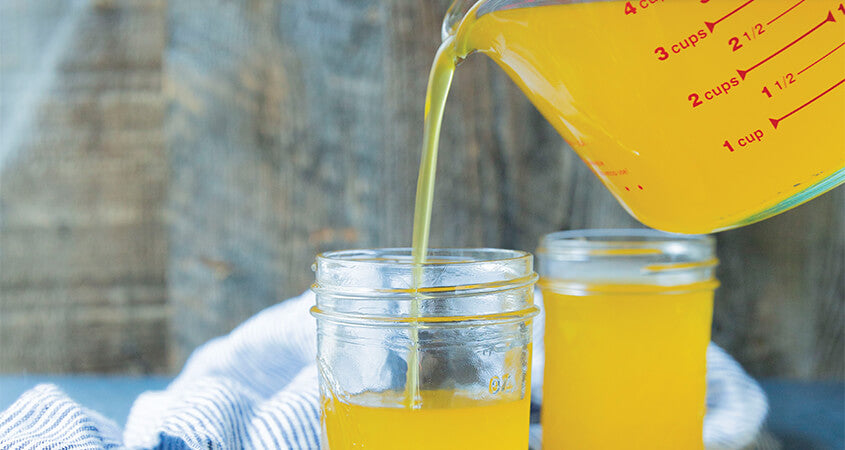If you've ever wondered how to make ghee and clarified butter, know that is super easy! The only special equipment you will need is a cheesecloth to strain it and you’re good to go.
Butter is an extremely nutrient-dense food that is loaded with vitamin A, vitamin D, and even vitamin K2. Still, many people cannot tolerate lactose, so clarifying grass-fed butter is a fantastic way to retain the nutrients while skimming away the potentially irritating milk sugars and proteins.
Clarified butter, the first step in making ghee (a type of clarified butter that holds roots in traditional Indian culture), is made by cooking the butter until all of the milk solids can be skimmed off the top. Ghee is made when the clarified butter is cooked a bit longer and the milk solids are allowed to brown and fall to the bottom of the pot, creating a nuttier, richer flavor.
Ingredients
- 2 pounds unsalted butter
Instructions
HOW TO MAKE CLARIFIED BUTTER
Slowly melt the butter in a medium-sized heavy-bottomed saucepan over low heat. As the butter comes to a simmer, the milk solids will float to the top and become foamy while the separated oil will become very clear. Skim off the milk solids and remove the butter from the heat. Pour it through cheesecloth to strain out any remaining milk solids. Store the strained liquid in a glass jar.
HOW TO MAKE GHEE
Follow the instructions for making clarified butter, but allow the milk solids to continue to cook slowly until they become browned and begin to sink to the bottom of the pan. When there are no longer any solids floating at the top, the ghee is finished. Pour it through cheesecloth to strain out the browned milk solids. Store the strained liquid in a glass jar.
Notes
Special Equipment
- Cheesecloth
Clarified butter and ghee are shelf-stable and will last indefinitely in the pantry. However, if some milk solids remain and the temperature in your home becomes very warm, they may go off. To prevent this, store them in the refrigerator—just be aware that they’ll become solid when chilled.


